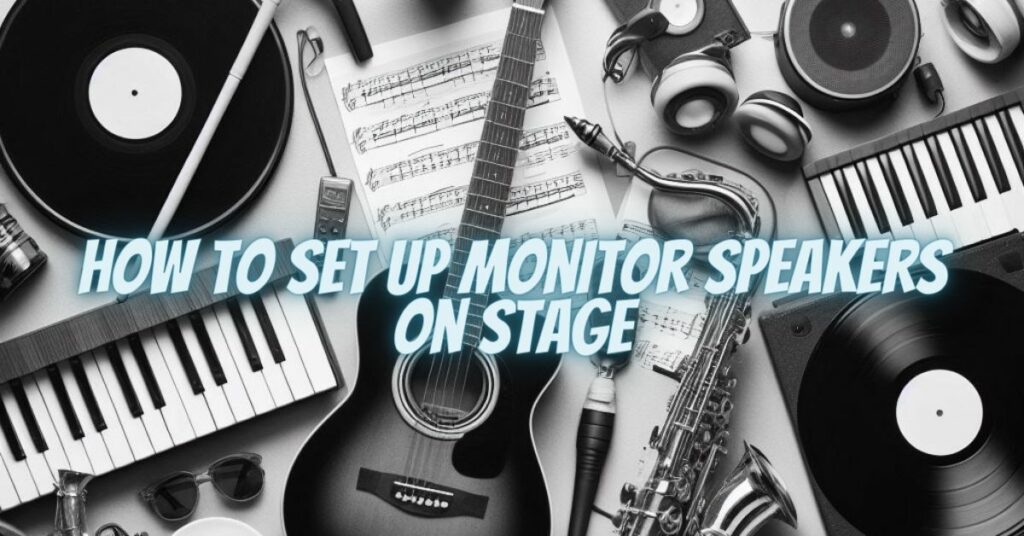Monitor speakers, also known as floor monitors or wedge monitors, are essential for any live performance. They allow musicians and vocalists to hear themselves clearly over the sound of the other instruments and vocals.
Setting up monitor speakers on stage can be a bit tricky, but it’s important to get it right to ensure a good sound for the performers and the audience. Here are some tips on how to set up monitor speakers on stage:
1. Choose the right monitor speakers
The type of monitor speakers you need will depend on the size of your stage, the type of music you play, and your budget. If you have a small stage, you may want to consider using nearfield monitors. Nearfield monitors are designed to be placed close to the listener, so they are ideal for small stages. If you have a large stage, you may want to consider using midfield or farfield monitors. Midfield and farfield monitors are designed to be placed further away from the listener, so they are ideal for large stages.
2. Place the monitor speakers in the right location
The ideal location for monitor speakers is in front of the performer, angled up towards their face. This will help to reduce feedback and ensure that the performer can hear themselves clearly. If there is not enough space in front of the performer, the monitor speakers can be placed to the side of the performer, but this should be avoided if possible.
3. Set the monitor speaker levels correctly
It is important to set the monitor speaker levels correctly to avoid feedback and hearing damage. The monitor speaker levels should be set so that the performer can hear themselves clearly without having to turn the volume up too loud.
4. Use a monitor mixer
A monitor mixer is a device that allows you to control the levels of each monitor speaker individually. This is useful for ensuring that each performer can hear themselves clearly. If you are using multiple monitor speakers, it is important to use a monitor mixer to control the levels of each speaker.
Here are some additional tips for setting up monitor speakers on stage:
- Avoid placing monitor speakers directly in front of microphones. This can cause feedback.
- If you are using a subwoofer, place it in the center of the stage and slightly in front of the performers. This will help to integrate the subwoofer into the soundstage.
- Use EQ to adjust the sound of the monitor speakers to match the acoustics of the room.
- Have the performers check their monitor mixes before the show starts. This will help to ensure that they are happy with the sound.
Troubleshooting
Here are some common problems that can occur with monitor speakers and how to fix them:
- Feedback: Feedback is a high-pitched squealing noise that occurs when a microphone picks up the sound of a monitor speaker and then sends that sound back to the monitor speaker. To fix feedback, try moving the monitor speakers away from the microphones, turning down the monitor speaker levels, or using EQ to reduce the frequencies that are causing the feedback.
- Muddy sound: If the monitor speakers sound muddy, try using EQ to boost the high frequencies. You may also want to try moving the monitor speakers closer to the performers.
- Lack of bass: If the monitor speakers lack bass, try using EQ to boost the low frequencies. You may also want to try using a subwoofer.
By following these tips, you can set up monitor speakers on stage that will provide the performers with a clear and balanced sound.

